#mulberry pigment
Text
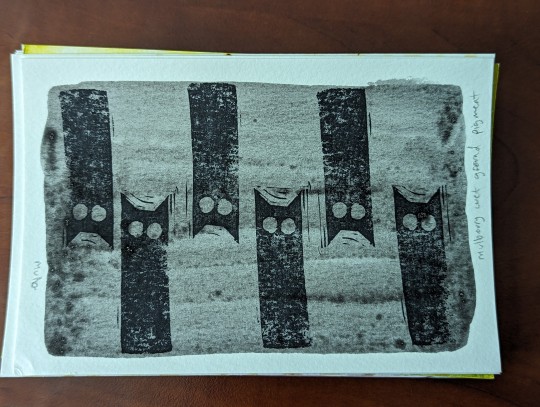

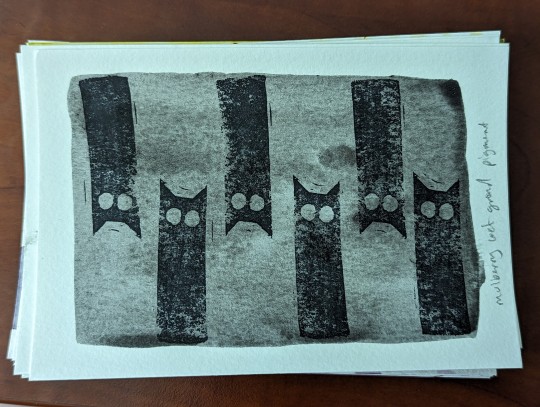
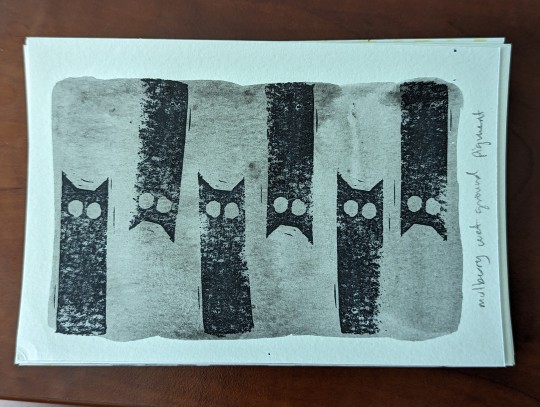
3 notes
·
View notes
Text





Waterfall paintings by Hiroshi Senju ~ 千住博
~ 'Waterfall' 2009
~ Another 'Waterfall' 2009
~ At the 'Shofuso' exhibition in Philadelphia, 2007
~ A double veil 'Waterfall' 2009
~ Another 'Waterfall' 2020
Natural pigments on Japanese mulberry paper. Nihonga style.
"Senju is one of the few modern masters of the thousand-year-old Nihonga style of painting, which emphasizes traditional Japanese techniques and materials."
"Senju began exploring the waterfall image almost 20 years ago. Evoking a deep sense of calm, his waterfalls conjure not just the appearance of rushing water, but also its sound, smell and feel.
Senju explains: "By pouring paint from top to bottom, I have been painting not the illusion of the waterfall, but creating the waterfall itself."
~ from "Out of Nature: Cliffs and Falling Water," Sundaram Tagore Gallery, Hong Kong. September 23 - November 10, 2009.
3 notes
·
View notes
Text

SEONGMIN AHN 안성민 - Blue Knife, 2020
#blue#knife#float#thread#string#red#art#SEONGMIN AHN 안성민#Blue Knife#2020#south korean#Ink#Pigment and Wash on Mulberry paper#painting#ink#silver
0 notes
Text
I will forever appreciate a theme in my fictional stories, & that’s exactly what Wind Breaker (by Nii Satoru) has, so, I present:
Wind Breaker characters have a theme to their names.. a thread:
Bōfūrin / 防風鈴
so, even though our protag group’s name is written and visually represented as “wind chime”, Bōfūrin’s name is where this group’s theme of trees/plants start:
防風鈴 (“prevent/protect” “wind chime”) has the same reading as 防風林, a type of forest planted strategically to prevent wind erosion of soil — much like Fūrin’s mission of protecting and serving their town

all of Bōfūrin’s named members (and close associations) so far have some element of tree/plant/wood in their last name (if you look at the kanji of their last names, you’d see a lot of wood radicals/木字旁):
桜 遥 • Sakura Haruka: 桜 / cherry tree
(fun fact: his name 遥 / haruka means "far"; also it's commonly a feminine given name)

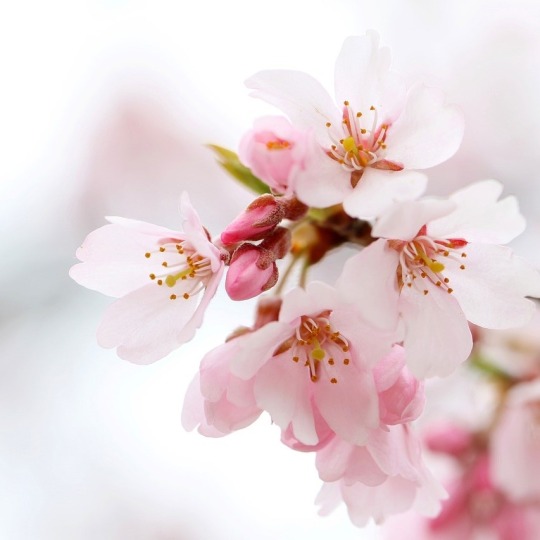
蘇枋 隼飛 • Suō Hayato: 枋 / sandalwood (?) or tree used as timber, general term for wooden beams in houses
(fun fact: his last name 苏枋 is the Chinese name of a traditional reddish brown color, named after a pigment made from 苏木!)


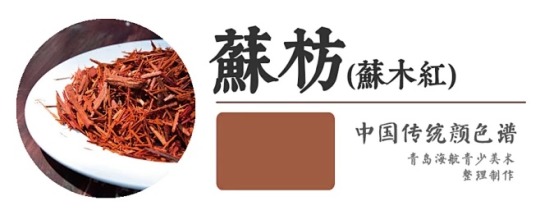
楡井 秋彦 • Nirei Akihiko: 楡 / Siberian elm

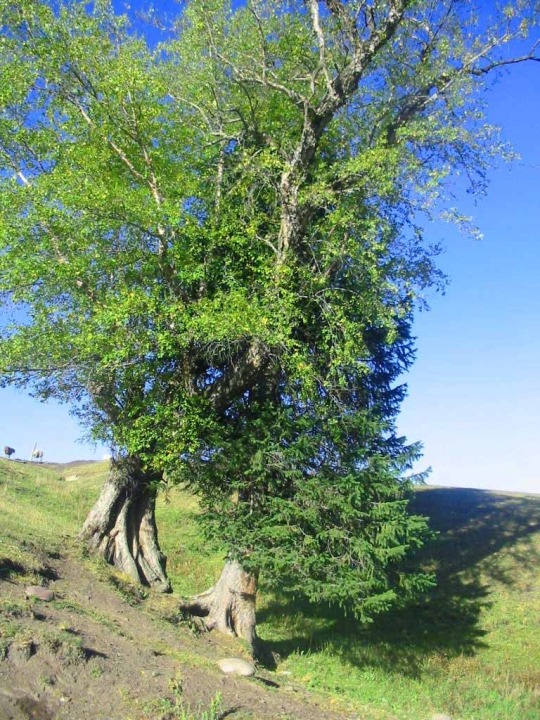
杉下 京太郎 • Sugishita Kyōtarō: 杉 / Japanese cedar (cryptomeria japonica)


柊 登馬 • Hiiragi Tōma: 柊 / holly osmanthus (osmanthus heterophyllus)
(fun fact: his name 登馬 means "to mount a horse"; no, not that kind of mount, the regular horseback riding kind)
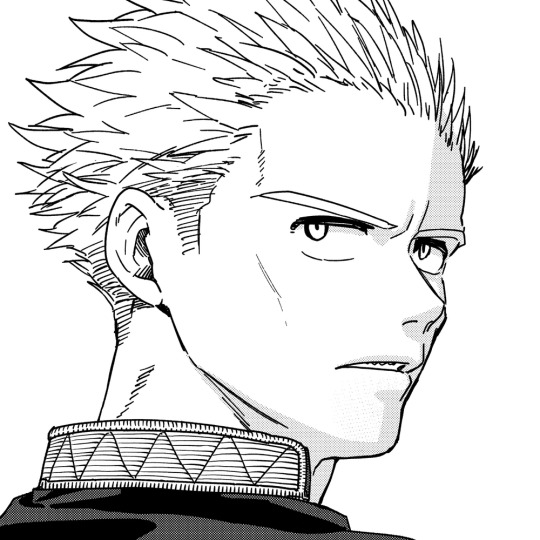
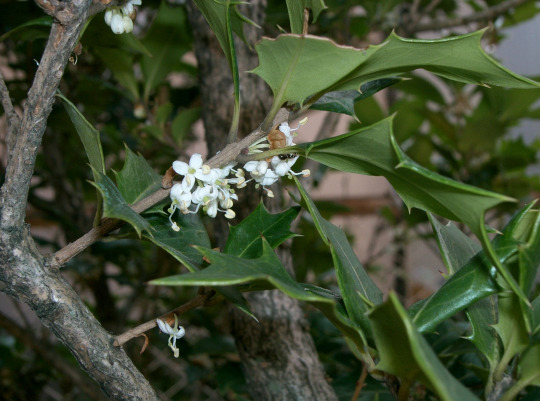
梅宮 一 • Umemiya Hajime: 梅 / plum tree
(fun fact: his name 一 is just "one")


This association also extends to Kotoha, who is very closely associated with Bōfūrin:
橘 琴叶 • Tachibana Kotoha: 橘 / orange tree
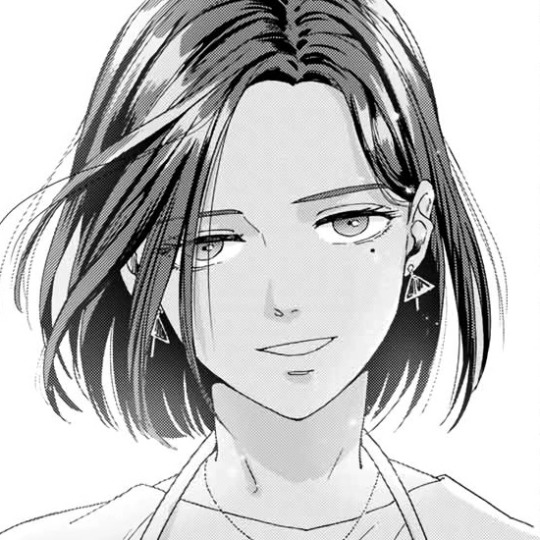
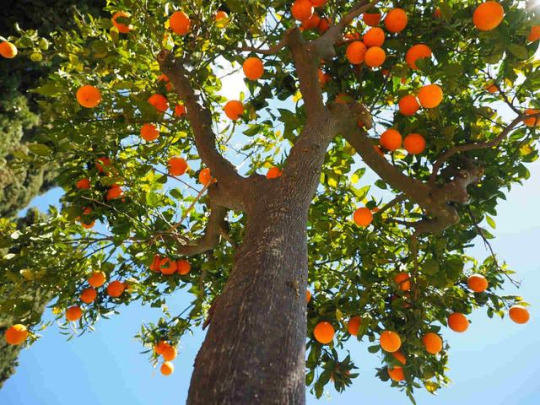
now, Bōfūrin members yet to be featured in the show:
(spoilers below the break)
(if you want to go to later parts: part 2 - shishitoren & part 3 - noroshi!)
梶 蓮 • Kaji Ren: 梶 / paper mulberry (broussonetia papyrifera)
(fun fact: his name 蓮 / Ren means "lotus")
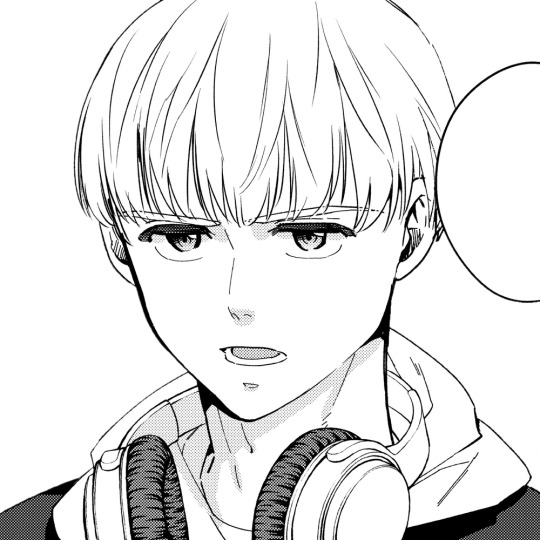
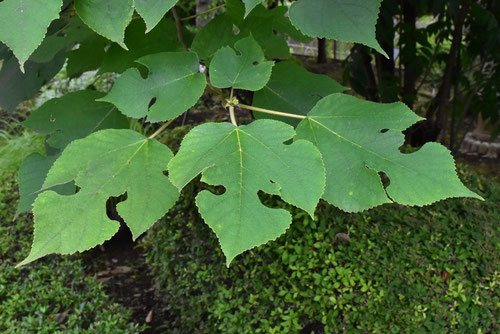
椿野 佑 • Tsubakino Tasuku: 椿 / Japanese camellia
(fun fact: their name 佑 means "to help/protect" or "to bless"!)

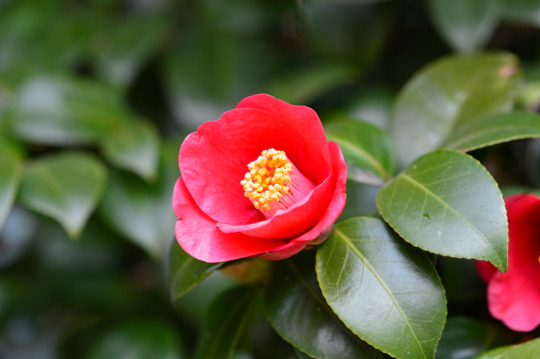
桐生 三輝 • Kiryū Mitsuki: 桐 / empress tree (paulownia tomentosa)
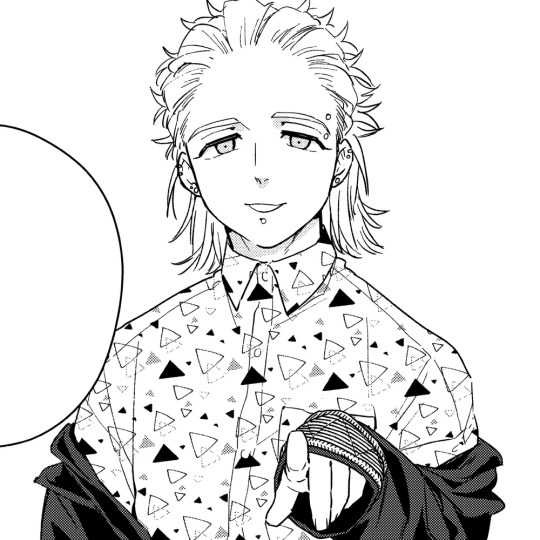

柘浦 大河 • Tsugeura Taiga: 柘 / mandarin melon berry (maclura tricuspidata)


There's also 桃瀬 匠 (Momose Takumi, "peach tree") & 水木 聡久 (Mizuki Saku, "wood"), the two other Heavenly Kings
I hope I have rly driven the point home here,, /lh
#wind breaker#wind breaker nii satoru#wind breaker anime#wind breaker manga#bofurin#sakura haruka#suo hayato#nirei akihiko#sugishita kyotaro#haruka sakura#hayato suo#kyotaro sugishita#hiiragi toma#toma hiiragi#umemiya hajime#hajime umemiya#kotoha tachibana#tachibana kotoha#kaji ren#ren kaji#tsubakino tasuku#tasuku tsubakino#kiryu mitsuki#mitsuki kiryu#tsugeura taiga#taiga tsugeura#language stuff#japanese language#wind breaker deepdive#yovo yaps
656 notes
·
View notes
Text
Moth of the Week
Domestic Silk Moth
Bombyx mori
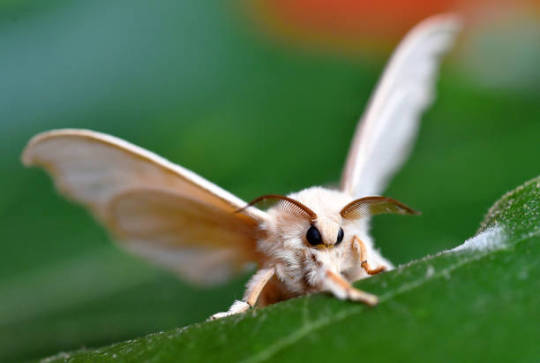
The domestic silk moth is from the family Bombycidae. It is very closely related to the wild silk moth (Bombyx mandarina), which was first described in 1872 by Frederic Moore. The domestic silk moth was created through selective breeding in order to produce more silk and therefore lacks several behaviors of other moths.
Description This species has white hairy bodies, legs, and wings unlike the wild silk moth which is pigmented brown. This loss of color is due to the domesticated moths no longer needing camouflage. Additionally, this species wings form from larval imaginal disks, and although some may be able to hover, due to domestication the B. mori in incapable of prolonged flight as their bodies are too big to carry. This changes their mating behaviors.
Compared to the wild silk moth, the domesticated silk moth has increased cocoon size, body size, growth rate, and quicker digestion.
Wingspan Range: 3 – 5 cm (1.2 – 2.0 in)
Females are about 2 to 3 times the size of males to carry the eggs.
Diet and Habitat Silk moth larva or silkworms prefer to eat white mulberry leaves and other species of mulberries. They are also known to eat the leaves of the osage orange.
As domesticated species, these moths live in man made habitats for silk production.
It’s undomesticated relative the wild silk moth, B. mandarina, ranges from inland China to Korea and Japan.
Mating Since they cannot fly to find mates like the males of other silk moths species, the B. mori is completely dependent on humans for mating.
The eggs laid are put in and hatch in incubators after approximately 14 days.
Predators This species has no predators due to being taken care of by humans. They have also lost their camouflage, seen in the B. mandarina, from domestication.
Fun Fact Many Asian cultures such as Indian, Chinese, Korean, Vietnamese, and Thai eat silkworms. They are roasted, boiled, and/or packaged for snack sale. They have also been proposed as food for astronauts on long missions.
(Source: Wikipedia)
#libraryofmoths#animals#bugs#facts#insects#moth#mothoftheweek#lepidoptera#Bombycidae#domestic silk moth#Bombyx mori
117 notes
·
View notes
Text









Ohad Tsfati (born 1960 in Tel Aviv) is a contemporary Israeli artist who creates sculptural objects from hand-made paper. Employing a method similar to the Japanese technique for creating washi, Tsfati mixes Mulberry bark to create heavily textured paper pulp he then manipulates into different forms to create wall hangings, bowls, and light fixtures. Lastly, the works are pigmented with natural dyes to achieve a richly pigmented surface reminiscent of the natural world from which the works take inspiration.
14 notes
·
View notes
Text
Love is…
Sometimes love is overwhelming. Sometimes love stories are too devastating — devastatingly beautiful. Romeo and Juliette choosing death over a life apart from another. Why does love hurt so much? Why is love so painstakingly beautiful it shatters you in a million tiny pieces and there‘s really only one person who will ever be able to mend you. Why is the mulberry tree still red to this very day, when it should be scattered with bright white pearls? Because nothing is shiny. Nothing is bright. Nothing is of value, if that one person is missing from your life. Love isn’t fiction. Love isn’t conventional. Love doesn’t adhere to any rules constructed by society — Love doesn’t play by the book. Not by Brontë or Austen not by Shakespeare or Pasternak. Love is real, love is present, love has always been and always will be. Love can’t be measured. Love can’t be gauged. Love can’t be dispelled as much as love can‘t be forced. You either love or you don’t. You‘re either willing to give everything for another person or you are just trying to get the best out of it for yourself. Love is Katharine Hepburn taking a decade long hiatus from the thing she loved doing more than anything else, to care for Spencer Tracy, a man that never married her, and calling it absolute bliss. Love is Elizabeth Taylor marrying Richard Burton again, because not having him in her life wasn’t an option either. Love is David Windsor giving up his inheritance, his family, an entire country to be with that divorced, American woman named Wallis Simpson. Love is Ronald Reagan writing ’you are life itself to me’ after thirty-one years of marriage to his Nancy. Love is Christine McVie conjuring up the lines ‘Don’t stop thinking about tomorrow‘ for her ex-husband John who’d hurt her one too many times, wishing him nonetheless ’all the love in the world‘. Love is miraculous. Love is cruel. Love is breathtaking. Love is heartbreaking. Even when fate‘s treacherous ways fiddle with your affairs, love will survive. Even when there are obstacles that you are barely able to overcome, love will prevail. Love is Virginia Woolf and Vita Sackville-West, love is Gertrude Stein and Alice B. Toklas, love is Dorothy Azner and Marion Morgan, Love is Oscar Wilde and Lord Alfred Douglas, Love is Tennessee Williams and Frank Merlo. Love is wonderful. Love is excruciating. Love is butterflies. Love is sacrifice. Love is a tingle down your spine. Love is a lump in your throat. Love is timeless. Love is endless. When my pigmentation mark stained hands are still clutching yours, when the protruding veins on our arms intertwine, when the last breath leaves your body, I’ll be by your side and you’ll know it‘s LOVE.
#ready to cry#sorry#poetry#sort of#monologue#story#love#love is#personal#thoughts#katharine hepburn#spencer tracy#elizabeth taylor#richard burton#ronald reagan#nancy reagan#love stories#couple#otp#ship#christine mcvie#john mcvie#william shakespeare#virginia woolf#dorothy azner#oscar wilde#tennessee williams#jane austen#romance#true love
12 notes
·
View notes
Note
Hi! I was wondering if u had any opinions about the colors Morwen would wear? I was thinking along the palette of the Hadorian heraldic device, + maybe black bc mourning (although what constitutes mourning-wear in Beleriand is another can of worms I suppose lol), but maybe she would want to incorporate Beorian colors/something else entirely? Thanks & have a good day!
Oh my gosh I have so many thoughts about this! I have some various fashion and clothing hcs here and in a couple other places
@erotetica
Sorry for the ramble!
For Hadorian clothing, I imagine they use wool, imported flax, occasional imported cotton, and leather. Their communities are agricultural based and men and women often wear smock like outfits on most working days. Noblewomen and those with more resources wear more cotton and dresses and skirts are common.
Dyes are mostly plant based and done by individual families with the exception of more expensive or elaborate pieces that will be made by artisans. Yellow and light green are common colors because they can be easily produced from dyers woad which grows abundantly in Hithlum. Blue can also be produced from woad though the process is somewhat more difficult and so is rarer in Hadorian dress.
General sewing and fabric work is done by both men and women while embroidery and decorative sewing is more gendered.
Flower patterns are a common Hadorian motif on clothes and architecture and purely abstract patterns are rare on clothes. You will often see mostly plain clothing but with designs of patterns around the hem, collars and for those with more time and resources, along the seam going down the side.
The Bëorians used more wool from alpaca and sheep as well as imported flax and occasionally nettles.
Color is very important in ceremonial clothing and dyeing is a significant trade among the Bëorians
Red madder root, woad, dyer’s croton, common marigold, dayflower, yellow chamomile and black mulberry are among some plants valued for dyes. Earthen and stone pigments are also used.
Red madder dyes are of particular significance to the Bëorians. The deep red color is used to dye sashes and headwear that is traditionally worn during formal occasions.
As the climate of Hithlum is different from Ladros, red madder could no longer be used after the Bragollach among Bëorian refugees. The deep red it yields is also considerably less common among Hadorian clothing and customs.
Many Bëorians in Hithlum had to relearn trades they had been doing their entire lives because of the differences in materials, processes and customs. As most had come with nothing, their clothing and possessions having been destroyed during the sudden flame, this was extremely disheartening and yet another aspect of the devastating losses of culture and customs.
I agree that Morwen would make point to wear Bëorian colors. The colors Morwen wears depends on when in her life. In Hithlum, in addition to Bëorians colors, I headcanon she often wore muted colors, and earthen ones, even before Húrin's loss.
I do think she would wear the Hadorian colors on some ceremonial occasions. She has a strong sense of honor and duty and although I think she is fiercely loyal to the customs and culture she grew up in, she is also loyal to Húrin.
Abstract patterns, some with cultural meeting, some without, are much more common in Bëorian clothing than in Hadorian ones. Geographic patterns are some of the most common and storytelling through these is a practice. Some of these patterns are carried over by refugees but many are lost.
I specifically headcanon that Morwen refused to use Hadorian customs whenever possible. The clothing she made, especially before her marriage, used Bëorian design and custom to the extent that it could.
I have the headcanon that Bëorian women who are married wear specific braids to designate marriage. In the event of widowhood, one of the braids is cut, the other kept. I go back and forth on if Morwen cut one of her braids, as she did believe Húrin to be alive. I think other aspects of mourning she was not able to engage in due to lack of resources during the occupation.
10 notes
·
View notes
Text
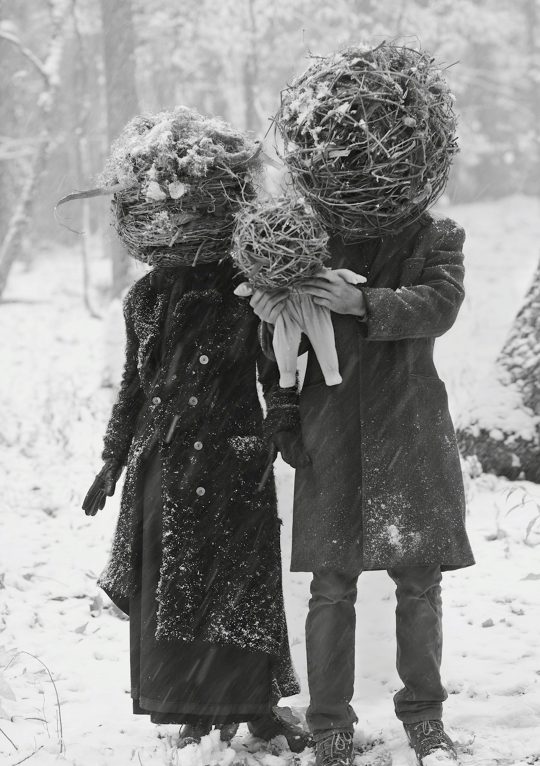
GUZMAN, “Woodheads 1, Egremont MA” (2018),
Archival pigment on dyed mulberry paper, 10 x 7 inches,
Image courtesy LABspace
#art#photography#surreal#creepy#fierce#freaky#black and white#guzman#woodhead#egremont#LABspace#family values#mask#twigs#subculture
15 notes
·
View notes
Text

Hiroshi Senju. Waterfall, 2024.
pigments on Japanese mulberry paper on board
13 notes
·
View notes
Photo

Howie Tsui (Chinese,b. 1978)
Peach Blossom Island (grow lamp), 2019
Paint pigment and acrylic ink on mulberry paper
168 notes
·
View notes
Text
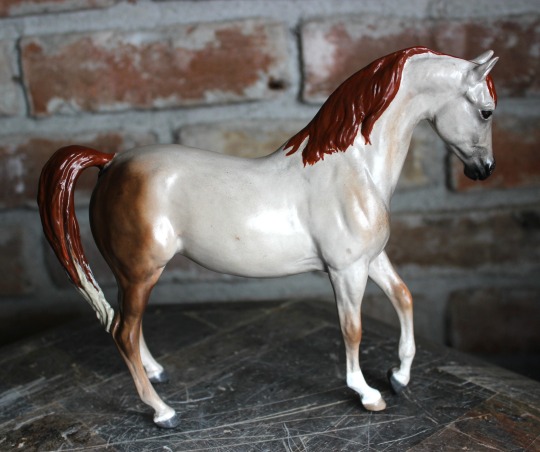



I finally came up with a good "recipe" for mulberry gray that I really like. My model this time is Breyer's Classic Johar from the Black Stallion Returns gift set. Her back right leg was broken off when I got her, so I repaired that, and I also made her facial profile less "dishy" and extreme. She's painted in earth pigments and acrylics, and the photos don't show all the subtleties in her coloration, especially on the mane and tail. She's available at http://thegreenwolf.etsy.com.
#Breyer horse#Breyer horses#Arabian horse#Breyer custom#gray horse#mulberry gray#scale model#miniatures#miniature horse#painted minis#customized toys#model horse#model horses
15 notes
·
View notes
Text
I wrote a thing:
Tell me how it is! It's not for the LGBT fest or anything (ikr shocking) but any feedback would be great!

Once, long ago, in a land long forgotten, there was a princess. She was the pride of her city – her parents loved her, her friends laughed with her, and her people adored her from the bottom of their hearts.
Perhaps, some would say, it was her beauty they all loved. Her smooth skin, the colour of the most expensive cinnamon the traders could buy from neighboring cities. Her hair, deep, silky black as if stained with the finest scholars’ ink, ink made from a hundred different pastes and pigments, blacker than the night sky in the middle of the desert. Her almond-shaped eyes, always lit with joy or mischief or a wise, graceful smile that drew faint crow’s feet in the corners, wisdom that came from love and kindness and experience. Perhaps, it was her fine clothes – edged with gold, embroidered with delicate peacocks and blooming flowers and nature in the midst of spring, rich mulberry, shocking green, sunset yellows and reds and faded oranges – set against her glowing skin and beautiful jewellery, even as she moved it was as if a shimmering world of silken thread moved with her.
Of course not. A wiser one would say, chuckling slowly at the ignorance of his fellow citizen. It’s not just her beauty I love. It’s her character. And indeed, he too spoke nothing but the truth. When the princess smiled, it was a true smile – with hints of fun, and youth, and a life being lived to the full. When she laughed, it was even more real – a laugh like that moment would never come again. She laughed as if she would never laugh again for the rest of her life, living in a whirlwind of passion and light. She spoke with an animated seriousness, treating each second that she was trusted with importance as just that – a trust, one that she had to repay, not a mindless job that could be half-done or passed off to a more-than-willing advisor. She worked night and day, already taking on so many of the responsibilities delegated to the king and queen – tours, inspections, interviews, recruitments, you name it, she had done it. Sometimes, there was the occasional photo of her, exhausted, leaning against the wall or sitting on a garden bench. Her people loved her all the more for it. Whatever she did, they loved her – because she did it with their best interests at heart.
All her little quirks were smiled upon and blessed and occasionally, laughed over. An infamous poet, as often as not it was her fingers, and not her hair, that were stained with the finest scholars’ ink. An intelligent girl, they would say, may god bless her. Her embroidery could rival the palace dressmakers themselves, shimmering thread creating shifting scenes in cloth. Threads, clinging onto her dress, laughed over in the corners of the kingdom, laughter received with a small half-embarassed giggle from the princess as she dusted down her clothes. A good girl, that one, they smiled, it’s good that she has fun while she still can. Everything she did, the people smiled upon her, for it was impossible to do anything else. The princess beautified everything she touched – coaxing music out of even the most worn-down flute, finding a rhythm in the simplest of drums, crafted by a child learning his trade, finding the joy of dance in the bleakest silence. Everything she does, she does it perfectly, they said with love and a hint of an envious sigh.
And as the inky-fingered, thread-covered princess grew up, she lost much that she had once loved. When she became a queen, she lost the freedom she enjoyed so much as a child, lost the time she’d once had to sew beauty into the very fibers of her life, but still: her skin was smooth and dark, her hair was inky black, she wrote her poetry and crafted her music - and still the queen was a happy woman.
For she had all the love of everyone in her kingdom, and their blessings shone down on her like the sun.

I feel like it's a bit long-winded, but idk. Yeah, basically tell me what you think :D
I wrote it a while ago when I was a bit annoyed at the lack of portrayals of Indian princesses/royalty in fiction, I just found it in my drafts now and thought well why not post it lol
#avani writes#indian kahani#indian-kahani#desi#time up#desi teen#princess#princesses? idek at this point#avani writes stupid stuff#avani simps for indian traditional clothing#far away lands#indian princesses#indian royalty
23 notes
·
View notes
Photo
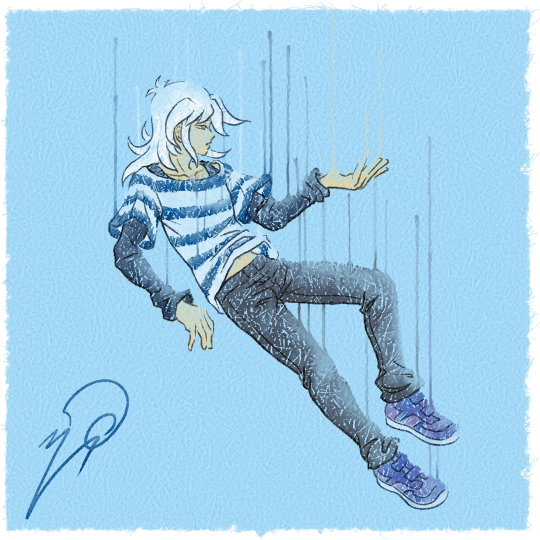
[Image ID: a digital watercolor illustration of Ryou Bakura, gently floating at an angle in a textured, pale blue background. His expression is soft, gazing at one of his hands. The lineart is primarily only along the lower, shadowed edges of his body. The color along some of the unlined top edges is fading, the pigment dripping upward, as if he is slowly fading as he falls.]
Bakuratober Day 14: Ghost
Second Rebelle test, watercolors & drips. This time on mulberry paper, because I love the almost web-like texture, and wanted to see how it affected the water physics.
I love the idea his undershirt here has shoulder cutouts! But my favorite shirt has a wide neck, too, so I like to think it's a half binder & matching armsleeves. Maybe someday he'll get a binder with a rad pattern to show off!
Also, Rebelle is still on sale for $20 (the Pro version is usually $150), and has a demo available if you wanna test it out! https://www.escapemotions.com/blog/ten-years-of-escape-motions
Bakuratober Day 18: Vampire
Bakuratober Day XX: [Nightmare]
Bakuratober Day 28: Dancer
#ryou bakura#bakura#bakuratober#ygo#yu-gi-oh#my art#fanart#rebelle 5#rebelle#am I projecting that he's agender/nonbinary?#absolutely yes#but all trans/queer headcanons spark joy#and he and Marik are fashion icons#so go forth with your fancy binders and wide neck shirts and crop tops#and show off how rad y'all are <3
80 notes
·
View notes
Text
Race, empire, and cartography

Map of lands in the Tultepec and Jaltocan regions adjacent to the Hacienda de Santa Ines (Mexico), 1569
The Farmers vs. Covarrubias map... depicts the local setting of a community of Indigenous people in colonial Mexico. It was painted on paper made from the bark of a mulberry or fig tree, using paper-making traditions practiced in the Americas long before the arrival of the Spanish. The pigments used to color the terrain derived from botanicals and minerals found in the landscape. The Indigenous mapmaker who made this map did so with subtle knowledge about the land, not only its topography, but also details about where to find the materials to make the map itself that can only be attained through studied interactions with its flora and fauna across generations.
Despite this ancestral relationship to the land, the mapmaker who made this map did so to defend his community’s claim to it and right to be on it. The Farmers vs Covarrubias gets its name from the 1569 court case in which the two named parties appealed to a colonial court to settle a dispute about the boundaries of property. Made just under fifty years after the Spanish military conquest of the Americas, the Farmers vs. Covarrubias map shows us how race was mediated by property lines in the earliest moments of Spanish occupation. Maps produced to support legal claims to territory in court cases demonstrate how Spaniards attempted to control the Indigenous population, los naturales, through a system of bureaucracy that was far from natural. As an example of this type of map, Farmers vs. Covarrubias shows how an Indigenous mapmaker, who represented the people of Tultepec, made claim to space and navigated a bureaucratic web using a system of picture-writing that was illegible to the Spanish court system. -- Ricardo Padrón and Risa Puleo
Read the full essay in Seeing race before race (ACMRS Press, 2023)
Explore this and other maps at our interactive resource Seeing race before race: a closer look
#newberry library#libraries#special collections#archives#maps#cartography#race before race#digital humanities#collection stories
3 notes
·
View notes
